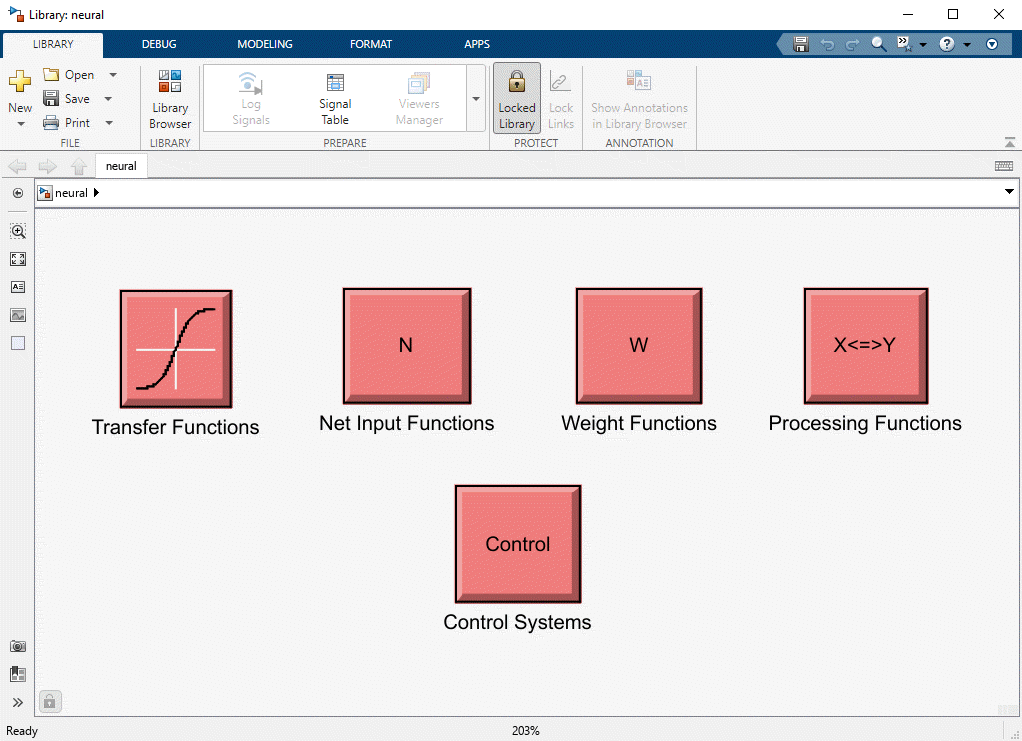
In addition to being limited by saturation, some actators have limits on how fast they can react, This limitation might be due to deliberate restrictions placed on the unit by its manufacturer to avoid damage to the unit. After placing the block as shown in Figure 9.8-1, double-click on it and type 2 in its Upper limit window and 0 in the Lower limit window. Suppose that the minimum and maximum flow rates available from the input flow valve are 0 and 2: These limits can be simulated with the Saturation block” which was-discussed in Section 9.4.

Set the Initial output to 0.2 to simulate an initial liquid height of 0.2. The block also lets you assign an initial value to the block input, but we will not use this feature and so will leave the Initial input set to 0 in the Block Parameters window. The ”Transfer Fen (with initial outputs)” block is equivalent to adding the free response to the block output, with all the block’s state variables set to zero except for the output variable. Simulink model of a hydraulic system with dead time This feature thus provides a useful improve-neat over traditional transfer-function analysis, in which initial conditions are lmed to be zero. In our model, this corresponds to the initial liquid height in the tank. The ”Transfer Fcn (with initial outputsj’vblock, so-called to distinguish it from the Transfer Fen block, enables us to set the initial value of the block output. Specifying Initial Conditions with Transfer Functions We will now discuss the other blocks in the model. Set the Step time to 0 in the Step Function block. After placing the Transport Delay block, set the delay to 1.25. For specific parameter values, the transfer function has the formįigure 9.8-1 shows a Simulink model for this system. Suppose that it takes a time T for the change in input flow to reach the tank following a change in the valve opening. Thus, T is a dead time. The block implementing the dead-time transfer function e-Ts is called the “TransportĬonsider the model of the height h of liquid in a tank, such as that shown in Figure 9.7-1, whose input is a mass flow rate qi. The fact that there are an infinite number of characteristic roots means that the analysis of dead-time processes is difficult, and often simulation is the only practical way to study such processes. Systems having dead-time elements are easily simulated in Simulink.
Matlab simulink transfer function series#
This can be seen by noting that the term e-Ts can be expanded in an infinite series as In fact, there are an infinite number of characteristic roots fora system-with dead time. The presence of dead time means the system does not have a characteristic equation of finite order. This can be a significant dead time in systems using inexpensive and slower microprocessors. Its effect on the system being controlled, or as a delay in the measurement of the output. Another, perhaps unexpected, source of dead time is the computation time required for digital control computer to calculate the control algorithm. The delay often results from the physical separation of the components and typically occurs as a delay between a change in the actuator signal and So the transfer function for a dead-time process is «”>.ĭead time may be described as a “pure” time delay, in which no response at all occurs for a time T, as opposed to the time lag associated with the time constant of a response, for which 82(t) = (1 – e-t/T)81 (t). Some systems have an unavoidable time delay in the interaction between components. If no heat energy is lost, then 82(t) = 81(t – T).įrom the shifting property of the Laplace transform,

The time T is the dead time. Let 8,(I) denote the incoming fluid temperature and 82(t) the temperature ofthe fluid leaving the conduit. If the fluid velocity IJ is constant and the conduit length is L, it takes a time T = L[» for the fluid to move from one end to the other. It occurs, for example, when a fluid flows through a conduit. Dead time, also called transport delay, is a time delay between an action and its effect.


 0 kommentar(er)
0 kommentar(er)
